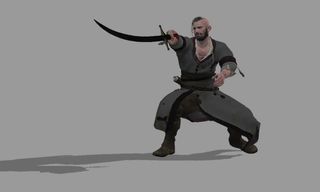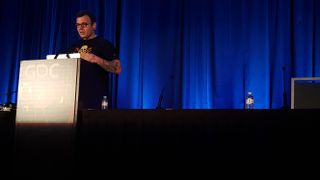The Witcher 3's animators created 7,000 new animations in one year for the DLC
CD Projekt's animation director explains how they cranked out thousands of animations to send Geralt out in style.

I haven't played The Witcher 3 since mid-2016, but I still think about it at least once a week. Some sidequest or character or bit of storytelling comes to mind, or I play another game, and I think, yeah, that was pretty cool, but it was no Witcher 3. That's mostly thanks to CD Projekt's incredible animation and cinematics teams, who shaped dozens of hours of cutscenes and dialogue and elevated already great writing with the best digital acting in gaming. At a GDC talk on Monday, CD Projekt animation director Sebastian Kalemba put some impressive numbers to those scenes: over three years of development, the animation team had to create 16,000 unique animation assets for The Witcher 3. Adding up every sidequest and cutscene, all the monsters and bosses and NPCs, that was to cover more than 200 hours of gameplay.
For the two DLC expansions, you'd think all that existing animation would've put them on easy street. But that's not how CD Projekt Red works, apparently. Instead, the animation team had only a year of development time, but ended up doing even more work in the same timeframe. For the 50 hours of DLC Kalemba estimated, they created almost 7,000 new animations.
Kalemba's talk was mostly about the obstacles his animation team faced in tackling so much work for the DLC in less time, and how they improved their workflow to make it all happen. Some of that best practices talk is more interesting for developers than us, but other parts felt like glimpsing a tiny piece of the formula that made The Witcher 3's cinematics a cut above.
Having even better back-and-forth communication with the story department was vital for the fast-paced development of the expansions, as it helped them zero-in on how characters and monsters would look and move more quickly. Kalemba also noted that while they had very mature, stable tools, they didn't have a lot of programmer support to draw on—the programmers are mostly busy on Cyberpunk, apparently.

Spoiler warning: I'm about to talk about some characters and bosses from Hearts of Stone and Blood & Wine.
Kalemba gave a great behind-the-scenes look at some major Witcher 3 DLC characters evolving throughout the animation process. "This guy was a nightmare," he said about Dettlaff, a vampire from Blood & Wine, who took a group of animators six months—double the time spent on most boss fights—which he said really wasn't enough. Nine months would've been ideal. But this was a great example of how the animators needed to work with the story team.
At first Dettlaff looked more or less humanoid with nasty claws. But that wouldn't cut it. Dettlaff was an old, high vampire, and as the final boss of The Witcher 3, they had to go above and beyond to deliver an amazing fight. They worked with story to figure out how Detlaff would change forms, determined how he would spawn wings and how he should move in his monstrous form.
The biggest gaming news, reviews and hardware deals
Keep up to date with the most important stories and the best deals, as picked by the PC Gamer team.
And then they took it a step further. "We were iterating, and talking to story, and they said, 'let's fight with the construct of his blood in an illusion of his heart.' Like, yeah. How to do that?"
No pressure, but I'd say they pulled it off.
Kalemba also talked about creating Olgierd von Everc, a major boss in Hearts of Stone. Geralt usually fights monsters, he explained, but Olgierd was an immortal man. How do you make him as interesting to fight?
They decided to make Olgierd's immortality show in his animation. He's cocky, always standing wide open waiting for you to attack him. They needed an aggressive fighting style to match, and after a lot of research found a 17th century Polish fencing style called cross sabre that fit perfectly. Olgierd attacks with lots of wide-open overhead slashes—all sourced from a stuntman's motion capture.
Check out some of the animations I mentioned, and others, in this five minute reel Kalemba put together.

Wes has been covering games and hardware for more than 10 years, first at tech sites like The Wirecutter and Tested before joining the PC Gamer team in 2014. Wes plays a little bit of everything, but he'll always jump at the chance to cover emulation and Japanese games.
When he's not obsessively optimizing and re-optimizing a tangle of conveyor belts in Satisfactory (it's really becoming a problem), he's probably playing a 20-year-old Final Fantasy or some opaque ASCII roguelike. With a focus on writing and editing features, he seeks out personal stories and in-depth histories from the corners of PC gaming and its niche communities. 50% pizza by volume (deep dish, to be specific).
As Netflix's The Witcher Season 4 loses another star, once again I feel compelled to tap the 'this no-budget YouTube fan film does the Witcher better' sign

I can only assume this upcoming Witcher children's book takes it easy on the folk horror, fantasy racism, and brutal violence I associate with the series
Most Popular


